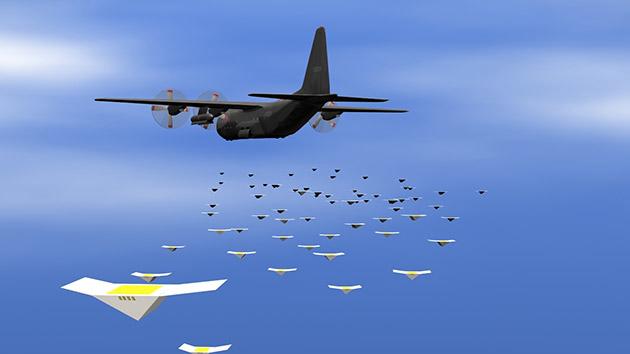cicada
Latest

Watch how the Navy plans to deploy its tiny Cicada drones
Cicada, the Navy's palm-sized, sensor-laden drone, has no propeller or engine. In fact, it looks like a child's plaything. So, how will they get to their destination? Well, the Navy plans to drop them from either a balloon or a bigger drone -- in this case, its testers used both. During a 2011 demo and test flight in Yuma, Arizona, the Navy attached Cicadas to the wings of bigger drones, which were, in turn, attached to balloons. Once the balloons reached 57,000 feet, they let go of the big drones, which flew until they were within 15 feet of the Cicadas' landing locations. The tiny drones then dropped and glided to their landing spot, thanks to their preprogrammed GPS coordinates. In all, the Navy did eight rounds of testing that day in Yuma, and you can watch one of the drops in action below the fold.

US Navy's cheap and tiny Cicada drones can listen in on the enemy
The Navy's Cicada drone has reemerged looking smaller than ever. Navy scientists have been developing the tiny smart glider since 2006 and even performed a flight test back in 2011. This newest iteration, which has been presented at the Department of Defense's "Lab Day" last week, is the smallest one yet and can fit in the palm of your hand. The US Navy has always envisioned the Cicada drone, formally named Covert Autonomous Disposable Aircraft -- a completely different project from the Navy's LOCUST drones -- to be tiny, low-cost and ultimately disposable. Like the insect, it was designed to fly in swarms and do its job until it (or, technically, its battery) dies. Despite looking like an innocuous paper/plastic plane, it's loaded with sensors -- Agence France-Presse even calls it a "phone with wings."
